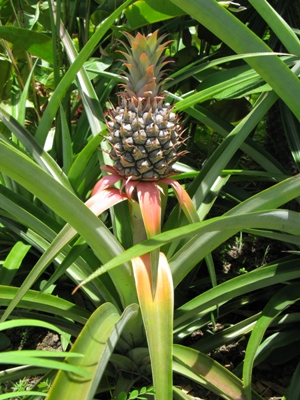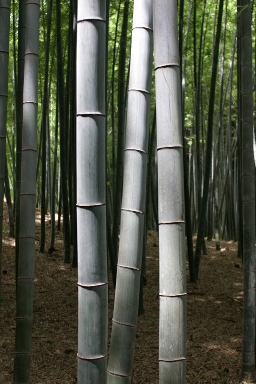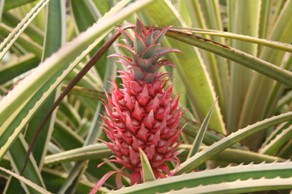Classification
Domain: Eukarya
Kingdom: Plantae Phylum: Anthophyta Class: Lilopsida Order: Bromeliales Family: Bromeliaceae Subfamily: Bromelioideae Genus:
Ananas Species: Ananas
comosus Lets Take a Closer
Look:
Domain: Eukarya
The first
phylogenetic tree shows how the Bromeliaceae family fits in the
larger scheme of things, going through the Kingdom, Phylum, Class,
Order and Family, based mostly on morphology.
The second phylogenetic tree shows how Ananas comosus fits
within the Bromeliaceae family. It shows the Family, Subfamily,
Genus and Species, and where it fits on the phylogeny of it all. Now that you have an idea of what pineapples are,
why don't you check out where they are found
here,
or return back to the home page
here.
Why?
Ananas comosus have a true nucleus and membrane bound
organelles. This domain contains a variety of species such as
ostrich,
sea cucumbers, and
avocado to name a few. 
Kingdom: Plantae
Why?
Ananas comosus are an autotrophic, photosynthetic plant with
chloroplasts. All members of this kingdom have cell walls made of
cellulose that aid in supporting the plant. The
kiwi and the
brazil nut are also members of this kingdom.
Phylum: Magnioliophyta
Why?
Ananas comosus are a flowering plant with seeds that develop
within the flower’s ovary and becomes a fruit. Another feature
members of Magnioliophyta (also known as Anthophyta) have is pollen
grains to move the sperm from one flower to another (pollination).
The
venus fly trap and
hot pepper are also members of this phylum.
Class: Liliopsida
Why?
Ananas comosus are monocots, which mean they have one
cotyledon, veins on leaves are parallel, fibrous roots, and
scattered vascular tissue. The flowers o n these plants usually have
petals in multiples of three. The
wild yam is also a member of this class. (2)
n these plants usually have
petals in multiples of three. The
wild yam is also a member of this class. (2)
Order: Poales
Why? Poales
usually grow in sunny and dry regions. Also, a common feature among
all Poales is that they have CO2- concentrating mechanisms like C4
photosynthesis or crassulacean acid metabolism (CAM). Ananas
comosus is a CAM plant. (3)
Family: Bromeliaceae
Why? Members
of the Bromeliaceae family are of the epiphytic, which means they
often grow non-parasitically on another plant. The water absorbing
scales that are located on their leaves and stems also characterizes
the Bromeliaceae family and help the plants to survive periods of
drought. The stems have rosettes of stiff and narrow leaves to
collect water. (2)
 Subfamily:Bromelioideae
Subfamily:Bromelioideae
Why? Members of the subfamily Bromelioideae are defined as being epiphytic and
terrestrial plants that have leaves with serrated edges. (2)
Genus: Ananas
Why? Their
sword shaped, tough leaves that grow in a rosette pattern from the
crown characterize members of the genus Ananas. They also
have fleshy fruits that are made up of many flowers. (7)
Species: Ananas comosus
Why?
Ananas comosus is a tropical plant with a large fleshy fruit.
It has stems with rosettes of tough, serrated leaves. The dense
terminal leaves for a fruit a syncarp (fleshy compound fruit), and
the main axis grows through the fruit and extends to form a crown of
tough leaves on top of the fruit. (5)Phylogenic Trees:


